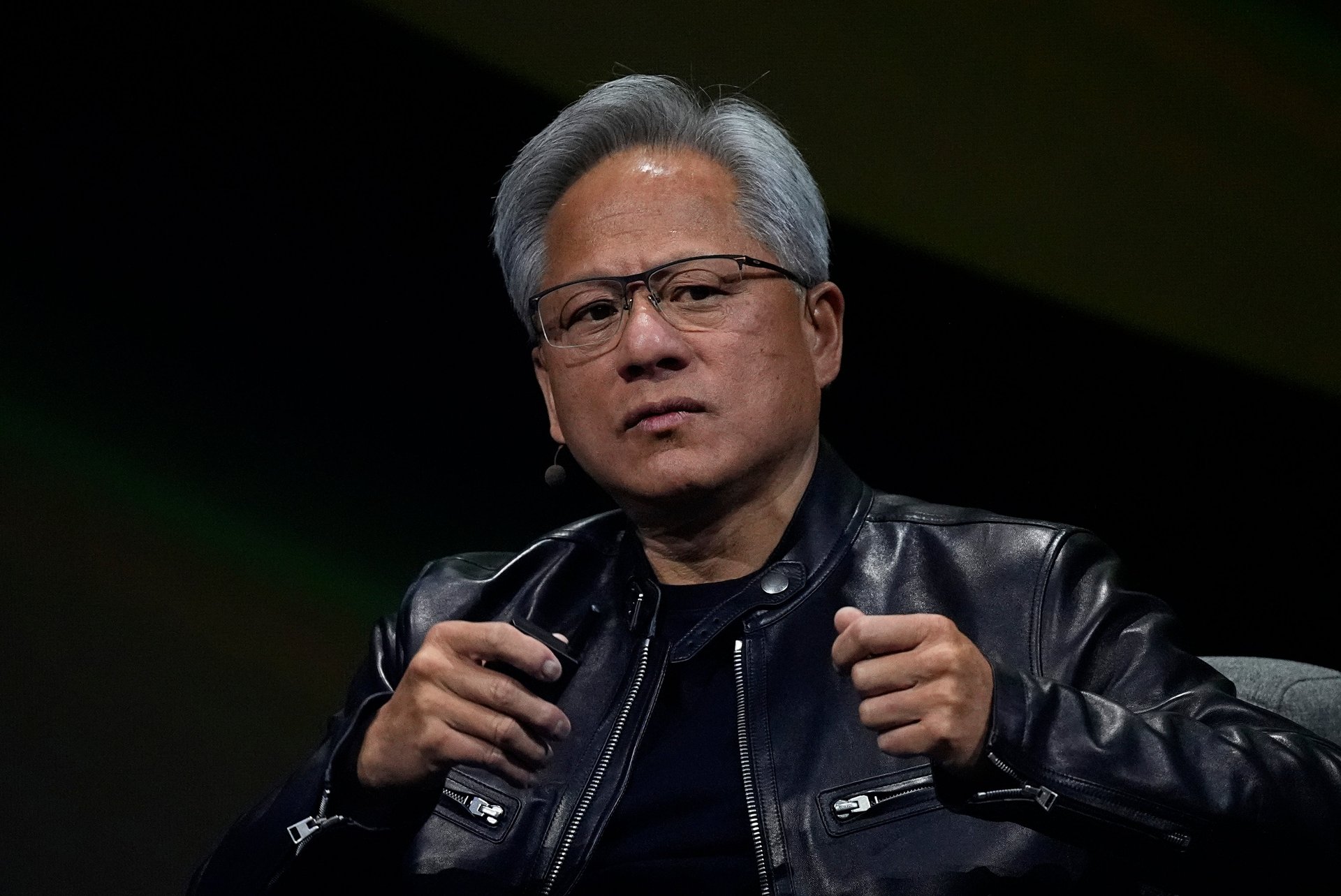Investors want to see a 'bullish' Nvidia in its earnings, analyst says
The AI chipmaker, which reports earnings today, is still in the cycle where expectations are palpable — and meeting expectations is not enough

After reporting record earnings for its fiscal second quarter on Aug. 30, Nvidia’s (NVDA) shares tumbled after investors were left unimpressed by its guidance for the fiscal third quarter.
Suggested Reading
With Nvidia’s fiscal third quarter results coming imminently, those expectations are still “incredibly high,” Daniel Newman, chief executive of The Futurum Group, told Quartz.
Related Content
“We know from the last quarter what happens if they are too conservative,” Newman said. “People want to see it be bullish.”
Nvidia is still in the cycle where expectations are palpable and meeting expectations is not enough — investors want to hear a beat, Newman said.
The chipmaker is expected to set fiscal fourth quarter guidance at $37.09 billion, according to analysts’ estimates compiled by FactSet (FDS).
“To support the stock on earnings day,” Nvidia will have to report fiscal fourth quarter guidance of at least $38 billion, John Belton, portfolio manager at Gabelli Funds, said in comments shared with Quartz.
Investors are also expecting updates on Blackwell, both Belton and Newman said, separately, amid reports that the highly-anticipated artificial intelligence chips are overheating when connected on custom-designed server racks that combine 72 of the company’s GPUs, or graphics processing units. However, Dell (DELL) said it has started shipping Nvidia’s GB200 NVL72 server racks, and Microsoft (MSFT) announced a private preview of the Blackwell AI infrastructure on its Azure cloud computing platform.
Blackwell experienced production and shipping delays earlier this year due to a design flaw that was fixed, Nvidia chief executive Jensen Huang said in October, after media reports about the issue surfaced in August. Before Huang addressed the design flaw, Nvidia’s shares got a boost after he said Blackwell was in full production and demand for the chip was “insane.”
“People want confirmation on Blackwell and margin integrity,” Newman said, adding that Blackwell revenue will come into play during the next earnings cycle. “People want to see how much enthusiasm there is,” and if the numbers can provide a positive outlook that the market wants to hear.
Nvidia has already announced its next-generation AI chip platform, Rubin, which will come after Blackwell in 2026. The Rubin platform will include new GPUs and a new central processing unit (CPU) called Vera, as well as advanced networking chips. During the company’s fiscal first-quarter earnings call, Huang said the chipmaker is “on a one-year rhythm” with producing new chips.
Investors will want to hear Nvidia’s roadmap for Rubin and if it can sustain its annual cycle, as well as whether its small but mighty customer base can continue buying at a fast rate while delivering returns, Newman said. Additionally, investors will be interested in Nvidia’s ability to keep its 92% share of the data center GPU market, including its plans to maintain pricing power and growth on the path to a $4 trillion valuation.
Meanwhile, “Nvidia’s foray into the autonomous vehicles and other automotive electronics space is a positive,” Brian Mulberry, client portfolio manager at Zacks Investment Management, said in comments shared with Quartz. “Notably, Nvidia’s focus on incorporating AI into the cockpit for infotainment systems is allowing it to grow its autonomous driving revenues.”
